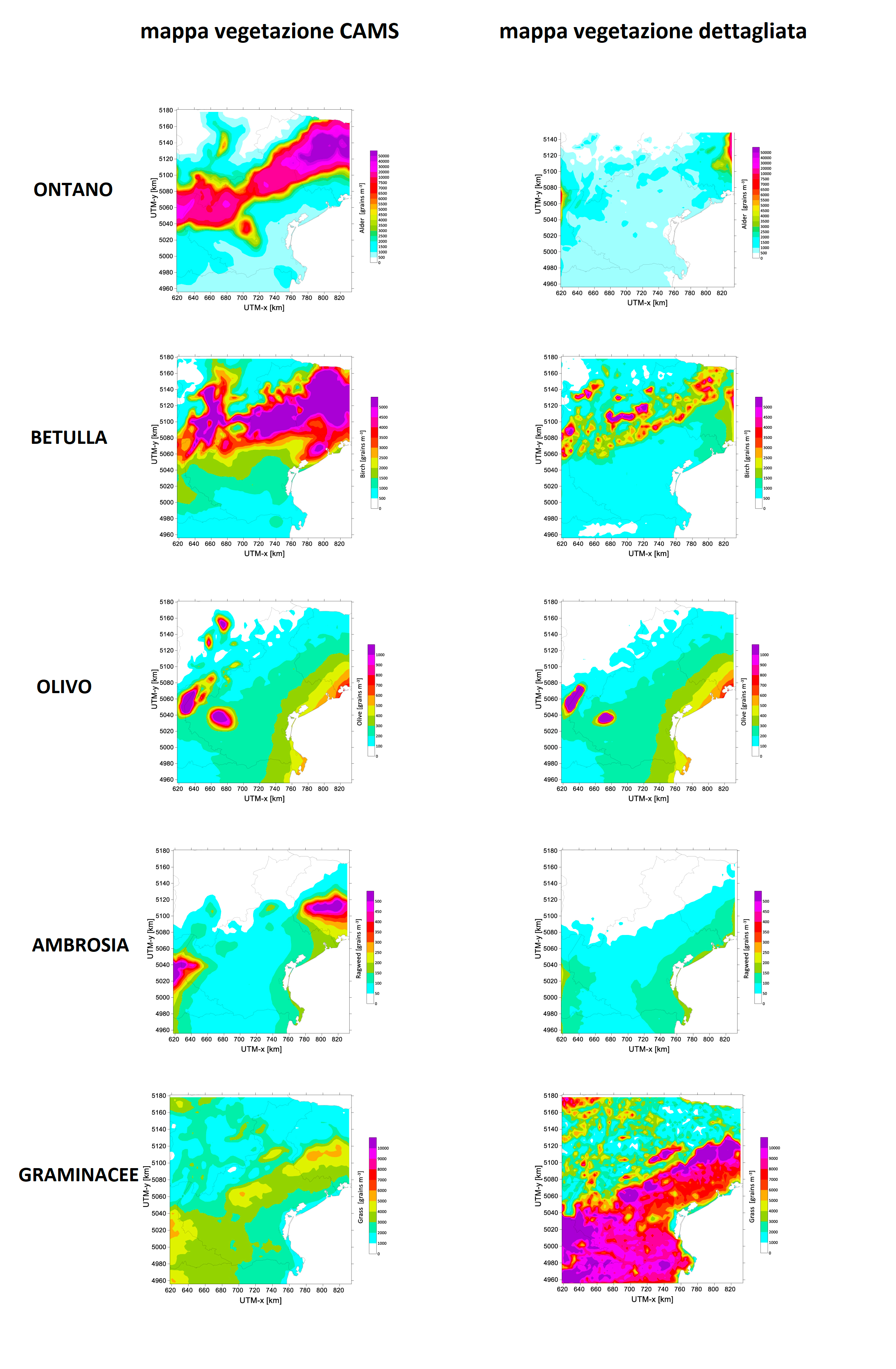Italian National Agency for New Technologies, Energy and Sustainable Economic Development

Health: Allergies, high-resolution model for pollen forecast
ENEA has developed a high-resolution, real-time modeling and monitoring system forecasting pollen seasons particularly for grasses, olive, birch, ragweed and alder, among the main culprits of seasonal allergies. The study, that led to the modeling innovation, was conducted as part of the project MEETOUT[1], in collaboration with the University of Verona, Arianet, ATS Milan and ARPA Veneto, and its outcomes, published in the journal Agricultural and Forest Meteorology, pave the way for improving prevention and management of respiratory diseases related to pollen exposure.
“We successfully tested the model in the Veneto region where we were able to simulate pollen dispersal, long-range spread and deposition processes with a spatial resolution of 3 km, and calculate pollen concentrations on an hourly basis for the year 2019. All this was attainable using accurate vegetation cover mappings, seasonal pollen release algorithms and weather forecasts,” explained Antonio Piersanti, head of the ENEA Models and Measurements for Air Quality and Climate Observations Laboratory and co-author of the study with Mario Adani, Gino Briganti, Massimo D'Isidoro, Mihaela Mircea and Maria Gabriella Villani.
“Due to its considerable potential, the new pollen forecasting system has been incorporated into our air quality monitoring model (FARM[2]) and used so far for daily pollen forecasts throughout Europe. This study shows that the model can also be applied to Italy and to single regions in greater detail,” Piersanti pointed out.
The study was conducted by comparing two types of vegetation maps: a low-resolution one (10 km with Copernicus data) and a more detailed one (between 250 meters and 1 km, with experimental data collected for the study). “Incorporating detailed vegetation data into our air quality model significantly improved predictions of alder, birch, olive and ragweed pollens, especially for complex areas like mountains, where high-resolution data are crucial. In addition, our new approach has made it possible to determine with improved accuracy the onset of the pollen season” Piersanti said.
Worldwide, pollen allergies affect about 20 percent of the population and are affected by climatic, geographic and vegetative factors. Changes in temperature, precipitation, and CO2 concentrations could increase the amount of pollen and prolong allergic seasons. In addition, phenomena such as water scarcity and drought push plant species to higher latitudes, while global trade has led to the introduction of alien species that change environmental conditions thereby producing new allergenic pollens.
Aerobiological monitoring is crucial for estimating population exposure to pollen, albeit its current limitations and the lack of pollen monitoring networks[3], due to the high cost of manual pollen counting, which can result in a 20-30% margin of error due to variability in pollen recognition capabilities of operators. Pollen bulletins are issued weekly, making it difficult to provide more frequent updates and preventing effective exposure prevention.
Recently, more accurate automated devices have been developed, although their use is still limited. e-Health and m-Health platforms, such as websites and smartphone apps, provide pollen predictions to allergic patients, helping them avoid exposure and manage tracking symptoms and medication use; however, a recent study of nine mobile apps highlighted the need to improve the quality of predictions.
“The implementation of high-resolution models like ours could provide essential information to vulnerable populations like patients with asthma or allergies, about pollen concentrations and the onset of pollen seasons. They would also enable accurate estimates of pollen concentrations to be provided in areas not covered by monitoring networks, as is already the case for chemical air pollution,” Piersanti concluded.
Notes
[1] Mitigation of the effects of environmental factors on chronic respiratory disease outcomes.
[2] FARM - Flexible Air quality Regional Model
[3] The Italian aerobiological monitoring network POLLnet currently consists of 57 monitoring stations distributed in 15 regions, which measure pollen concentrations (pollen per cubic meter, p/m³) daily, collected in a freely accessible national database (www.pollnet.isprambiente.it).

